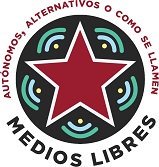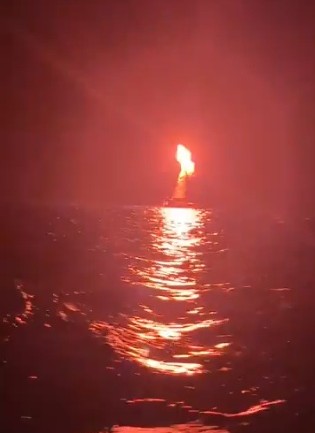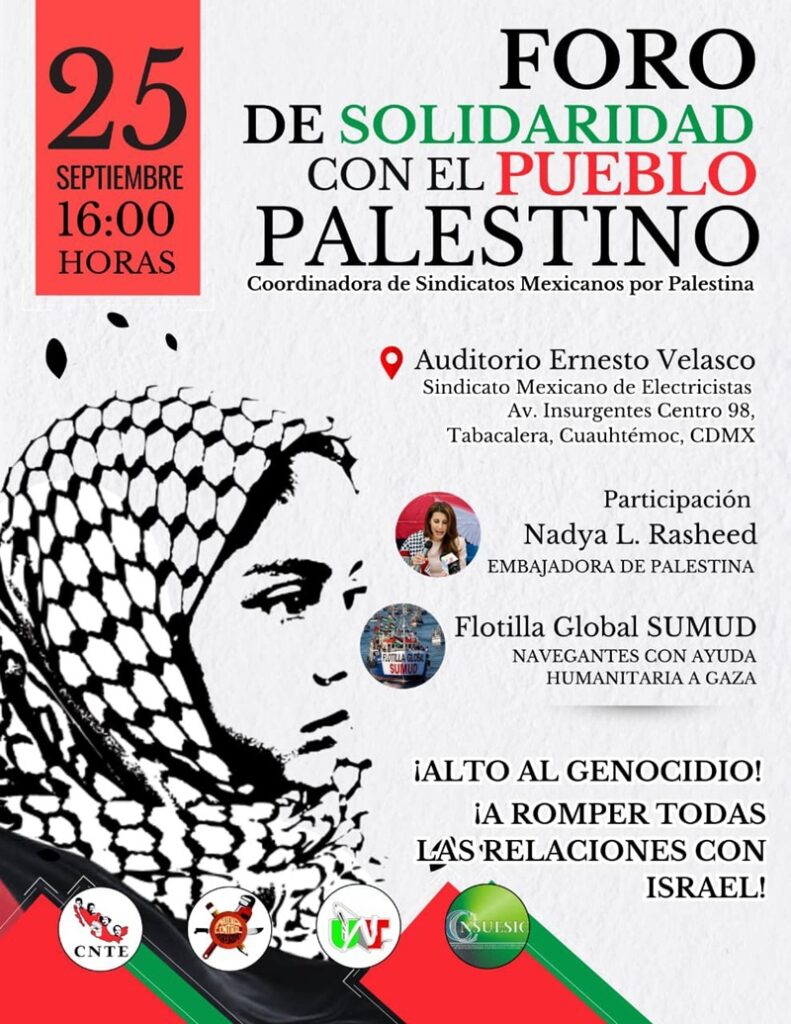
Palestina
Tras intimidación militar de Israel, la Global Sumud Flotilla se acerca a Gaza
Hace algunas horas, la Global Sumud Flotilla rebasó la línea de las 150 millas náuticas de distancia de Gaza, punto en el que las autoridades y los medios israelitas afirmaron que no le permitirían pasar. Un navío militar israelita realizó maniobras intimidatorias, circulando alrededor de los barcos Alma y Sirius, y lanzó un ataque cibernético que dañó el equipo de comunicación y navegación, que hasta ahora continúa presentando problemas. Según los testimonios, se veían luces iluminando uno de los barcos desde abajo, lo que quizás indique la presencia de un submarino militar. Después de un tiempo en alerta máxima, el navío agresor se alejó.
A pesar de las agresiones, intimidaciones y amenazas, la Flotilla continúa. Son 41 barcos con miembros de más de 40 países, determinados a romper de forma pacífica el cerco israelita y llevar ayuda humanitaria que el pueblo palestino necesita desesperadamente. Con la legislación internacional y el apoyo de la mayoría de la población mundial, la Flotilla es el intento más audaz por romper el cerco hasta ahora.
En este momento, la Flotilla ya rebasó las 120 millas náuticas, y el peligro de una intercepción o un ataque israelita es inminente.
Invitamos a quienes nos leen a estar atentxs a la Flotilla en las próximas horas, que serán las más cruciales. Sólo los ojos del mundo serán capaces de garantizar que la Flotilla llegue a su destino y la integridad de sus tripulantes.
Streaming en directo desde la Flotilla: https://www.youtube.com/watch?v=uEN2bWFtpjU
Localización de la Flotilla en tiempo real: https://flotilla-orpin.vercel.app/
Canal de Telegram con actualizaciones desde la Flotilla: https://t.me/globalsumudflotilla
La Global Sumud Flotilla denuncia intento de sabotaje por parte del Estado italiano
PARA DIFUSIÓN INMEDIATA
DECLARACIÓN SOBRE LA FRAGATA NAVAL ITALIANA QUE INTENTA SOCAVAR LA GLOBAL SUMUD FLOTILLA
30 de septiembre de 2025
El Ministerio de Asuntos Exteriores de Italia nos ha informado que la fragata naval que sigue a nuestra flotilla pronto emitirá un llamado por radio, ofreciendo a los participantes la “oportunidad” de abandonar el barco y regresar a tierra antes de llegar a la llamada “zona crítica”. Queremos ser absolutamente claros: esto no es protección. Es sabotaje. Es un intento de desmoralizar y fracturar una misión humanitaria pacífica que los gobiernos no han asumido, a pesar de que fue su silencio y complicidad lo que nos llevó hasta este punto.
Esto es cobardía disfrazada de diplomacia. Si Italia realmente quisiera proteger vidas, no actuaría como facilitador de Israel, ni presionaría a civiles para que se retiren. Utilizaría su flota naval para garantizar el paso seguro de voluntarios pacíficos hacia Gaza, para hacer cumplir el derecho internacional y para entregar suministros que salvan vidas. Cualquier cosa menos que eso es complicidad.
Cada participante a bordo está plenamente consciente de los riesgos. No estamos aquí bajo ninguna ilusión. Estamos aquí porque es mucho más peligroso permanecer en silencio ante el genocidio, el hambre y el castigo colectivo que navegar llevando ayuda humanitaria. El gobierno italiano lo sabe, y aun así, en lugar de usar su considerable poder naval para romper un asedio ilegal, elige escoltarnos solo hasta el punto de peligro y luego intenta alejarnos, llevándonos de regreso a la costa con las manos vacías, mientras Israel continúa matando de hambre y asesinando al pueblo palestino con total impunidad.
Repetimos: la flotilla continúa navegando. La marina italiana no detendrá esta misión. La exigencia humanitaria de romper el bloqueo no puede retroceder hacia el puerto, y nuestra responsabilidad moral no puede ser abandonada por la borda. Cada milla náutica que avanzamos, cada amenaza que enfrentamos, solo subraya lo que los gobiernos no han hecho y lo que los ciudadanos comunes ahora se ven obligados a hacer.
El bloqueo de Israel es ilegal. Su asedio es criminal. Y el silencio del mundo es intolerable. Si el gobierno italiano quiere ser recordado por su valentía, debe navegar con nosotros.
Contacto de prensa y actualizaciones:
Hasina Kathrada: +44 1414 620 950
Correo: media@globalsumudflotilla.org
Instagram / Telegram: @globalsumudflotilla







